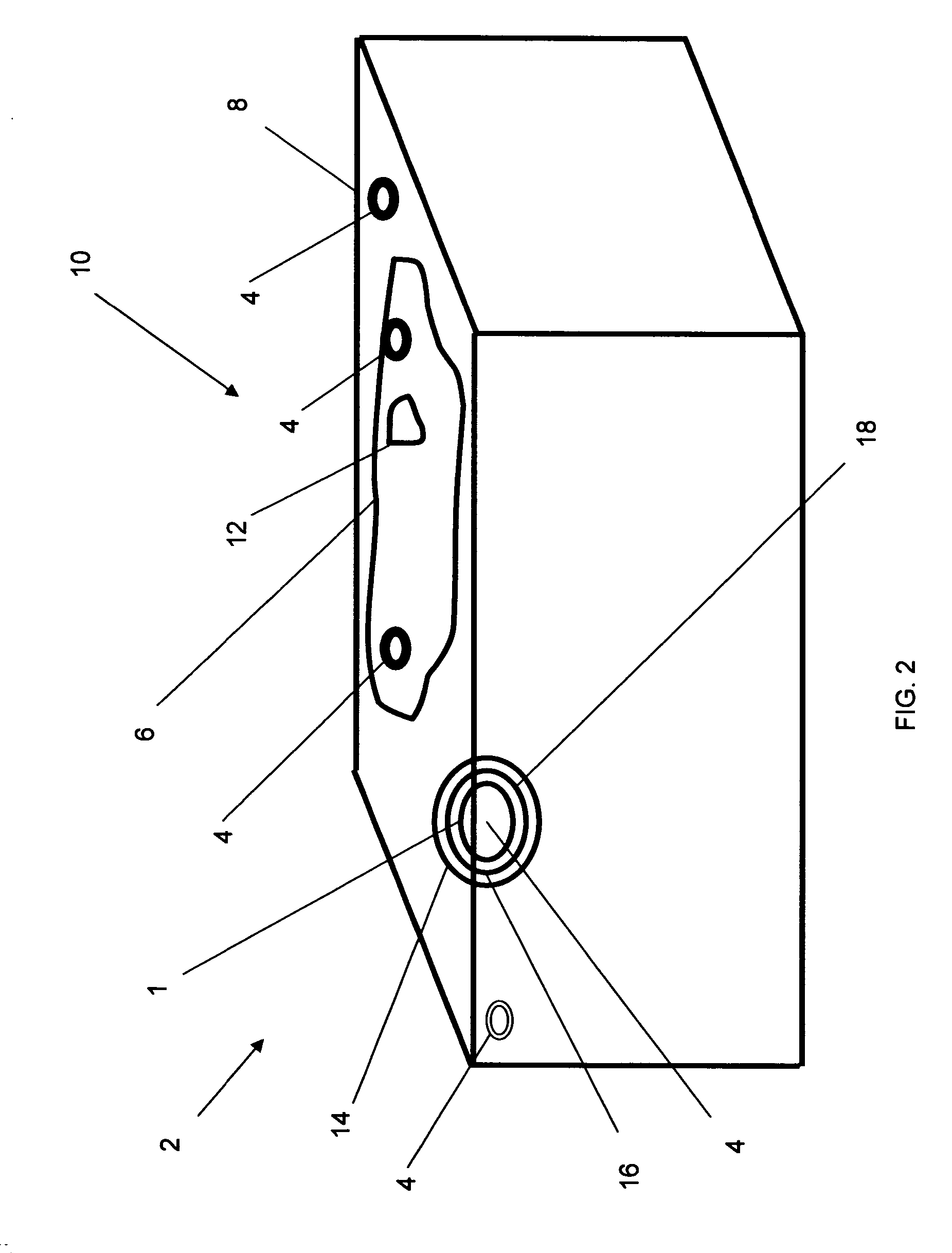Material and method of capturing oil
- Summary
- Abstract
- Description
- Claims
- Application Information
AI Technical Summary
Benefits of technology
Problems solved by technology
Method used
Image
Examples
first preferred embodiment
[0027] Referring now generally to the Figures, and particularly to FIG. 2, in a first preferred embodiment of the present invention 2, pristine glass microfibers available from Johns Manville as MicroStrand™ 100 are used as the substrate material 4. One pound of the microfiber material 4 is processed in the present example. The deposition process is scaleable, however, and much larger volumes of microfiber can be processed with a concomitant increase in surface chemistry and reaction chamber size.
[0028] The microfibers 4 are placed directly into the chamber and contained in a perforated stainless steel fixture. No washing is required as the packaging and handling of the fibers is sufficient to keep the substrate clean. The chamber is then sealed and heated to 120° C. to eliminate excess adsorbed moisture from the surface of the fibers. Once this temperature is reached, the chamber is flushed twice with CO2 by pressurizing the chamber to 100 psi and subsequently venting to atmospher...
second preferred embodiment
[0031] In a second preferred embodiment of the present invention, diatomaceous earth is used as the substrate material 4. One pound of the material 4 is processed in the present example. The deposition process is scaleable, however, and much larger volumes of diatomaceous earth can be processed with a concomitant increase in surface chemistry and reaction chamber size.
[0032] The substrate material 4 is washed with water to remove debris and placed into the chamber where it is contained in a perforated stainless steel fixture. The chamber is then sealed and heated to 120° C. to eliminate excess adsorbed moisture from the surface of the material. Once this temperature is reached, the chamber is flushed twice with CO2 by pressurizing the chamber to 100 psi and subsequently venting to atmospheric pressure.
[0033] A small orifice in the top of the pressure vessel is then opened and 15 mL of octylthriethoxy silane (OTS) is metered into the chamber using a pipette. The orifice is then clo...
PUM
| Property | Measurement | Unit |
|---|---|---|
| Weight | aaaaa | aaaaa |
| Mechanical strength | aaaaa | aaaaa |
| Density | aaaaa | aaaaa |
Abstract
Description
Claims
Application Information
 Login to View More
Login to View More - R&D
- Intellectual Property
- Life Sciences
- Materials
- Tech Scout
- Unparalleled Data Quality
- Higher Quality Content
- 60% Fewer Hallucinations
Browse by: Latest US Patents, China's latest patents, Technical Efficacy Thesaurus, Application Domain, Technology Topic, Popular Technical Reports.
© 2025 PatSnap. All rights reserved.Legal|Privacy policy|Modern Slavery Act Transparency Statement|Sitemap|About US| Contact US: help@patsnap.com


